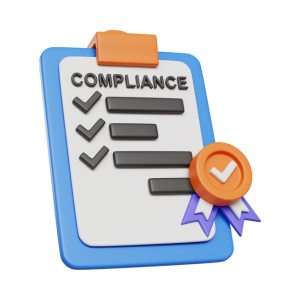Service Level Agreement (SLA)
A Service Level Agreement (SLA) is a contractual document between a service provider and a customer that defines the scope of services, performance standards, and the responsibilities of both parties. The SLA aims to ensure that the service provider delivers the expected level of service and that the customer knows what to expect in terms of performance, response time, and availability.
- Customer SLA
- Internal SLA
- Multilevel SLA

Overview of Service Level Agreement (SLA)
A Service Level Agreement (SLA) is a contractual document between a service provider and a customer that defines the scope of services, performance standards, and the responsibilities of both parties. The SLA aims to ensure that the service provider delivers the expected level of service and that the customer knows what to expect in terms of performance, response time, and availability.
The SLA serves multiple purposes. It provides a framework for service delivery, sets clear expectations, and outlines the consequences in case of service failure. For service providers, SLAs manage customer expectations and help in setting clear boundaries regarding their responsibilities, including what circumstances exempt them from liabilities, such as poor service or downtime. For customers, an SLA helps in benchmarking service performance against other vendors and provides a clear process for resolving service issues.
An SLA differs from a standard contract in that it is bi-directional, specifying the responsibilities and expectations of both the service provider and the customer. On the other hand, a Service Level Commitment (SLC) is a more one-sided agreement where the service provider assures specific standards to their clients.
Types of Service Level Agreements (SLAs)
SLAs can take various forms depending on the scope and nature of the service relationship. There are three primary types of SLAs:
- Customer SLA
A customer SLA is a formal agreement between a service provider and its external customers, specifying the services to be provided, performance metrics, and the penalties or rewards for meeting or failing to meet the agreed-upon standards. It is the most common type of SLA for IT services, telecom services, and cloud computing. - Internal SLA
Internal SLAs are used within an organization to define the expectations between different departments or teams. These agreements are often less formal but serve the purpose of clarifying responsibilities, such as between the IT department and HR or between sales and customer service teams. - Multilevel SLA
A multilevel SLA is more complex and provides different levels of service for different aspects of the service agreement. It can apply to a single customer, multiple customers, or multiple services. This type of SLA is ideal for companies offering diverse services and aims to tailor service levels to the specific needs of different customer groups or services.
Why is a Service Level Agreement Essential?
SLAs are essential for various reasons, providing a structured approach to service delivery and ensuring that both parties understand their commitments. Key reasons why an SLA is necessary include:
- Clear Expectations
An SLA sets clear expectations regarding the services to be provided, ensuring that customers know exactly what to expect and reducing misunderstandings. This helps in managing customer satisfaction and preventing conflicts over service performance. - Service Performance Benchmarking
SLAs provide measurable performance standards, such as response times, uptime guarantees, and issue resolution timelines. This benchmarking allows both parties to assess whether the service provider is meeting the agreed standards. - Accountability
SLAs hold the service provider accountable for the quality of service. If the service provider fails to meet the terms outlined in the SLA, they can be penalized, offering a means of recourse for the customer. - Risk Management
SLAs help in managing and mitigating risks, especially in the case of IT and network services. By defining clear performance criteria and outlining the process for handling outages or disruptions, SLAs reduce the risks associated with poor service delivery.
Who Needs a Service-Level Agreement?
SLAs are essential for any organization providing services to its customers. This includes but is not limited to:
- IT Service Providers
For businesses offering cloud services, managed IT services, or software-as-a-service (SaaS), SLAs are necessary to define service expectations like uptime, system performance, and technical support response times. - Telecommunication Companies
SLAs are commonly used by ISPs and telecommunication companies to manage network uptime, service disruptions, and customer support. - Managed Service Providers (MSPs)
MSPs that manage IT infrastructure, networks, or devices often rely on SLAs to ensure that service levels are met, from regular system maintenance to issue resolution.
Penalties in a Service-Level Agreement
Penalties are often implemented in SLAs to ensure that service providers meet the agreed-upon standards. These penalties can take various forms:
- Service Disruptions
Penalties may be imposed if the service provider fails to meet uptime guarantees or experiences excessive service downtime. - Performance Failures
If service quality is below the expected standard, penalties may apply. This could include poor product quality, slow response times, or failure to meet agreed-upon service deliverables. - Monetary Fines
The service provider may be required to compensate the customer for damages or losses incurred due to subpar service. This may include reimbursement for lost revenue or coverage of the costs incurred due to the failure.
Is an SLA Transferable?
The transferability of an SLA depends on the specific terms outlined in the agreement. Generally, SLAs may or may not be transferable:
- Transferable SLAs
Some agreements allow customers to transfer the rights and responsibilities to another party, such as when a business sells or transfers operations to a new owner. In this case, both the customer and the service provider must agree to the transfer, ensuring that all conditions of the SLA are upheld. - Non-Transferable SLAs
Many SLAs are non-transferable, meaning that the customer must seek permission from the service provider to transfer the agreement. Factors that influence transferability include the specific services, the relationship with the provider, and whether the service is customized for the original customer.
Before attempting to transfer an SLA, it is important to carefully review the contract terms, obtain approval from the service provider, and ensure that all relevant stakeholders are notified and agree to the transfer.
When to Revise a Service-Level Agreement?
Over time, an SLA may require revisions based on changing circumstances. Key triggers for revising an SLA include:
- Changes in Service Scope
If a service provider introduces new services or discontinues existing ones, the SLA should be updated to reflect these changes. - Changing Business Requirements
If the customer’s needs evolve, such as increasing business operations or scaling services, the SLA must be revised to ensure that the new requirements are met. - Improvements in Measurement Tools
As the service provider upgrades its measurement and monitoring tools, new performance metrics may need to be incorporated into the SLA to ensure more accurate assessments of service delivery. - Technological Advancements
If new technology or equipment enables the service provider to offer faster or more reliable services, the SLA should be updated to reflect the new capabilities.
Required Documents for APEDA Registration
To complete the APEDA registration process, businesses must submit the following documents:
Proof of Business Registration:
This can include a certificate of incorporation, partnership deed, or trade license.
Import-Export Code (IEC):
A valid IEC issued by the Directorate General of Foreign Trade (DGFT).
Product Specifications:
Information about the products to be exported, including packaging, labelling, and composition.
Quality Certifications:
Copies of relevant certifications such as ISO, HACCP, or organic certifications.
Export Experience:
Documentation of past export activities, if any.
Facility Details:
Information about the production, storage, and shipping facilities, ensuring compliance with APEDA guidelines.
Checklist for APEDA Registration
Ensure the following before applying for APEDA registration:
Confirm Eligibility:
Ensure your business is eligible for APEDA registration, focusing on export activities related to agricultural and processed food products.
Collect Documents:
Gather all required documents, including proof of business registration, IEC certificate, and product details.
Understand APEDA Guidelines:
Familiarize yourself with APEDA’s rules, quality standards, and export requirements.
Prepare Export Strategy:
Have a clear export plan and strategy in place to demonstrate your export-readiness.
Submit Application:
Complete and submit the online application with the required documents to APEDA’s Chennai office.
Address Queries:
Be ready to respond to any inquiries or requests for additional information.
Payment:
Pay the required registration fees and obtain your APEDA registration certificate.
Procedure for APEDA Registration
The registration process for APEDA in Chennai involves several steps:
- Online Application: Visit the APEDA website, fill out the application form, and provide necessary details such as the IEC, business contact information, and product details.
- Document Submission: Upload the required documents (e.g., proof of business registration, quality certifications) in the specified format.
- Payment of Registration Fee: Pay the registration fee of Rs. 5000 online via credit card, debit card, or demand draft.
- Application Review: APEDA will review the submitted application and documents. Upon approval, a Registration-Cum-Membership Certificate (RCMC) is issued, granting access to APEDA services and benefits.
Renewal of APEDA Registration
APEDA registration is typically valid for one or two years, depending on the issued certificate. To ensure continued export eligibility, businesses must renew their registration before it expires. The renewal process includes:
- Renewal Application: Submit the renewal application along with updated documents to the APEDA regional office.
- Document Verification: APEDA will verify the submitted documents to confirm ongoing compliance with their standards.
- Renewal Approval: Upon successful verification, the registration is renewed, and the updated certificate is issued.
- Timely Renewal: Ensure timely renewal to avoid delays in export operations.
Conclusion
Service Level Agreements (SLAs) are critical tools that define the expectations and responsibilities between service providers and their customers. They provide clarity on service performance, accountability, and penalties for non-compliance. Whether used for customer relations, internal processes, or multi-level service structures, SLAs play a vital role in ensuring that services meet the required standards. Regular revisions and careful management of SLAs help ensure that both parties remain satisfied with the terms and delivery of services.
FAQ'S
APEDA, the Agricultural and Processed Food Products Export Development Authority, is an institution established by the Government of India to promote the export of agricultural and processed food products. Registering with APEDA is crucial for exporters as it ensures compliance with regulatory standards and provides access to various support mechanisms and benefits.
APEDA registration is mandatory for entities engaged in the export of agricultural and processed food products, including but not limited to fruits, vegetables, meat, and dairy products.
Applications for APEDA registration can be submitted online through the official APEDA website. The process involves completing an application form and providing the necessary documentation.
To register with APEDA, you typically need to provide:
- A valid PAN card
- GST registration certificate
- Proof of business address
- Bank details
- A signed declaration
Yes, a registration fee is applicable. The fee amount varies based on the nature of your business and the products being exported.
The APEDA registration process generally takes a few weeks. The duration depends on the completeness of your application and the verification process.
You can track the status of your APEDA registration application online by logging into your account on the APEDA portal.
APEDA registration is valid for a period of five years. To maintain your registration, you must apply for renewal through the APEDA online portal before the current registration expires.
Yes, you may update your APEDA registration details online through the APEDA portal as necessary.
In the event of a rejection, APEDA will provide a notification detailing the reasons. You should address the specified issues and resubmit your application.
APEDA registration offers several advantages, including access to financial assistance, export promotion schemes, and expert guidance on complying with export standards.
Yes, exporting organic products entails additional certifications and adherence to specific regulatory requirements.
Upon successful registration, you can download your Certificate of Registration directly from the APEDA portal.
No, APEDA registration is required for exporting agricultural and processed food products covered under its jurisdiction.
APEDA supports exporters by offering training programs on export procedures and quality standards, as well as providing market intelligence and research to identify opportunities and trends.








